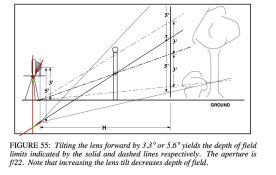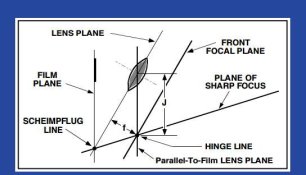Doremus Scudder
Member
I have a question about my medium format Topcon Horseman 970 6x9cm camera (see avatar), for the large format users if that's OK? I hope the cross-over post will be allowed.
It only has backward tilt on the front standard and I wondered under what circumstances this would be best used, as I have read that forward tilt is mostly used to increase depth of field?
It also has limited forward and back tilt and swing on the rear standard. Perhaps this can compensate for the loss of forward tilt on the front?
Any advice is welcome and apologies if I've crossed a line.
The backward tilt on the front standard likely matches a detent on the rear standard and allows you to point the camera down or use the bed drop, then tilt one or both standards back to the pre-selected detents in order to get an effective front fall (which the camera likely doesn't have). To get effective front forward tilt, you tilt the whole camera forward and then tilt the back backward.
Best,
Doremus








